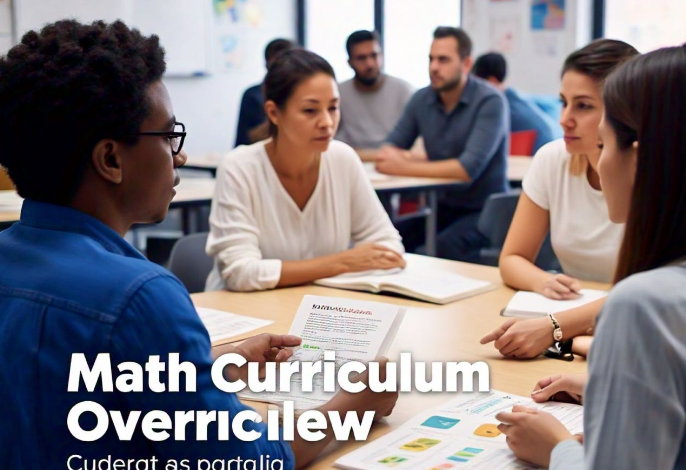Math Curriculum in Spanish: An Overview for Parents and Educators

The Math Curriculum in Spanish is designed to help students understand key math concepts while also learning the language. As math is a universal subject, having a curriculum in Spanish can be an advantage for bilingual students or those learning Spanish as a second language. It introduces students to numbers, shapes, measurements, and basic arithmetic in a way that makes it easier for them to learn both math and Spanish at the same time.
In many Spanish-speaking countries, the math curriculum in Spanish covers everything from basic number recognition to advanced algebra and geometry. This approach not only helps children in their math education but also strengthens their ability to communicate in Spanish. Whether you are homeschooling or looking to complement your child’s classroom learning, understanding how math is taught in Spanish can be beneficial for all learners.
What Is the Math Curriculum in Spanish?
The math curriculum in Spanish focuses on the same fundamental math concepts found in other languages, but the lessons are taught in Spanish. This curriculum is designed to introduce students to topics such as numbers, basic operations, and geometry. The goal is to not only improve their math skills but also help them learn new vocabulary in Spanish.
For younger students, the math curriculum in Spanish starts with learning how to recognize numbers and do simple addition and subtraction. It progresses to topics such as multiplication, division, and working with fractions. As students move into higher grades, the curriculum also introduces more complex topics like algebra, geometry, and statistics. This makes it a great option for both native Spanish speakers and students learning Spanish as a second language.
How Does Math in Spanish Help Bilingual Learners?

For bilingual learners, using the math curriculum in Spanish can be a huge advantage. It allows students to practice their Spanish while also working on their math skills. This not only improves their math abilities but also helps them become more fluent in Spanish. By using math as a way to learn a new language, students can make connections between numbers and words more easily.
Here are some ways the math curriculum in Spanish helps bilingual learners:
- Expands vocabulary related to numbers and operations.
- Reinforces language skills through math terminology.
- Encourages students to think in both languages.
Key Topics in the Spanish Math Curriculum for Elementary Students
In elementary grades, the math curriculum in Spanish teaches students the basics of math. These early topics include number recognition, counting, and understanding simple shapes. Students are also introduced to addition, subtraction, and measurement. The goal is to build a strong foundation for more complex math skills.
Key topics include:
- Counting and number recognition.
- Basic addition and subtraction.
- Shapes and simple geometry.
What Are the Key Differences Between Spanish and English Math Curriculums?

The math curriculum in Spanish may differ in some ways from what is taught in English-speaking countries. While the fundamental concepts are the same, the approach to teaching can vary. For example, in some Spanish-speaking countries, the focus may be more on mental math and problem-solving from an early age. The methods used to teach concepts like fractions, multiplication, and division might also differ slightly, but the core principles remain the same.
Key differences between Spanish and English math curriculums:
- Different approaches to teaching problem-solving.
- Variations in the sequence of topics taught.
- Use of specific terms and math language in Spanish.
Conclusion
In conclusion, the math curriculum in Spanish is a fantastic way for students to improve both their math skills and their Spanish language skills. It helps them understand math concepts while learning new vocabulary and becoming more fluent in Spanish. Whether you are a bilingual student or someone learning Spanish as a second language, this approach can make math fun and more interesting.
By practicing math in Spanish, students can build a strong foundation in math and gain the confidence they need to tackle more advanced topics. So, if you are looking to improve your math abilities and Spanish language skills, exploring the math curriculum in Spanish is a great choice!
FAQs
Q: What is the math curriculum in Spanish?
A: The math curriculum in Spanish is a set of math lessons and topics taught in Spanish. It includes subjects like addition, subtraction, multiplication, and geometry, but the lessons are presented in Spanish to help learners improve their language skills while learning math.
Q: How can the math curriculum in Spanish help bilingual students?
A: For bilingual students, the math curriculum in Spanish can help them practice both their math and Spanish skills. It lets them learn math terms in Spanish, which improves their fluency and understanding of both subjects.
Q: Is the math curriculum in Spanish different from English math curriculums?
A: While the math topics in both English and Spanish are similar, the math curriculum in Spanish may have different teaching methods and terminology. The order in which topics are taught could also vary between languages.
Q: Can I use technology to practice math in Spanish?
A: Yes! There are many apps and online platforms where students can practice math in Spanish. These tools make learning math more interactive and fun while helping to build language skills.
Q: Can I teach myself math in Spanish?
A: Yes, you can! With the help of books, online resources, and apps, it’s possible to teach yourself the math curriculum in Spanish at your own pace. Practice and consistency are key to improving your skills.
